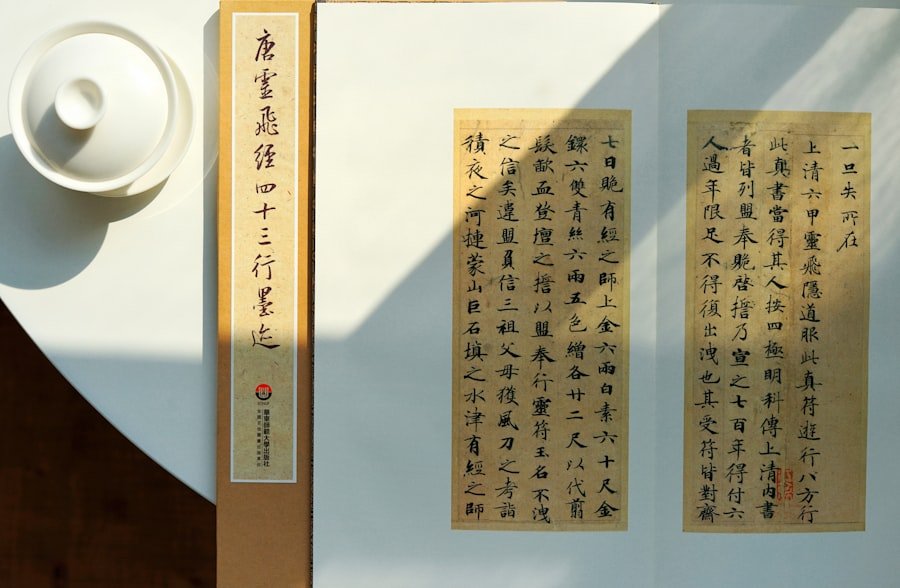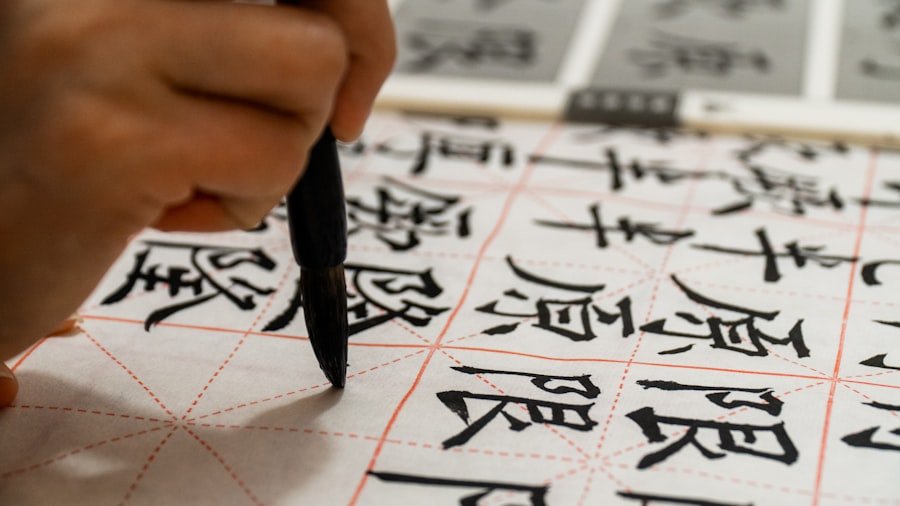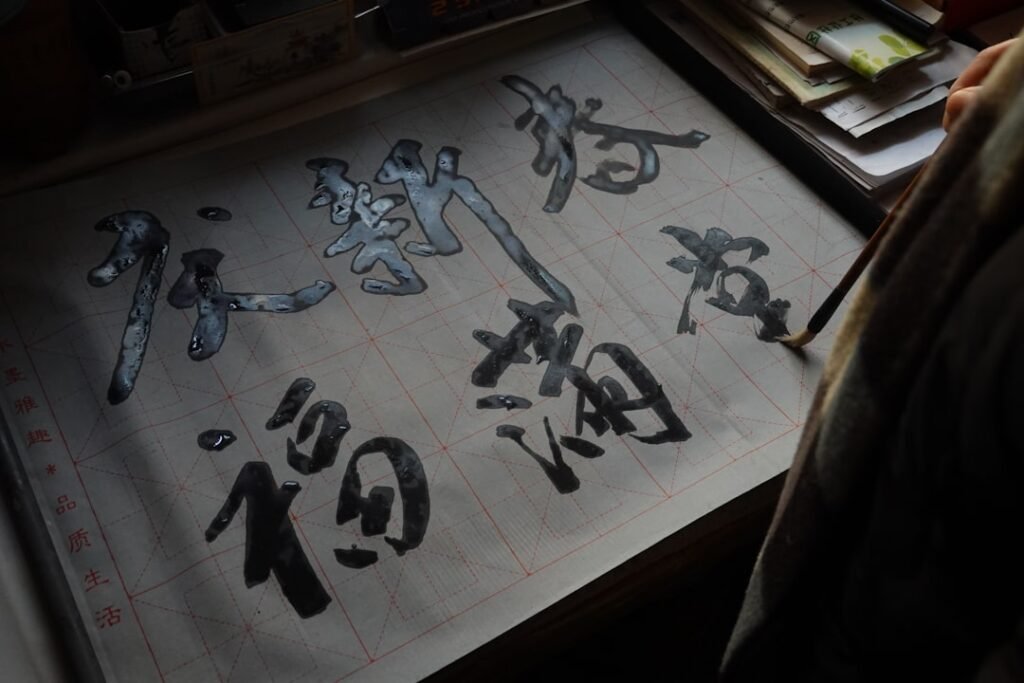Chinese calligraphy, an ancient art form that has flourished for thousands of years, is not merely a means of writing; it is a profound expression of culture, philosophy, and aesthetics. This unique practice combines the beauty of visual art with the intricacies of language, allowing practitioners to convey emotions and thoughts through the graceful strokes of a brush. The art of calligraphy is deeply rooted in Chinese history, reflecting the evolution of the language and the society that has nurtured it.
As one delves into this captivating world, they discover that each stroke tells a story, and every character embodies a rich tapestry of meaning. The allure of Chinese calligraphy lies not only in its visual appeal but also in its meditative qualities. Engaging in this art form encourages mindfulness and concentration, as practitioners must focus on their movements and the flow of ink on paper.
This process can be both calming and invigorating, providing a respite from the fast-paced modern world. For those seeking to explore their creativity or deepen their understanding of Chinese culture, learning calligraphy offers a rewarding journey that transcends mere writing. Master the art of Chinese calligraphy. Enroll now at the LC Chinese School in Oslo.
Table of Contents
ToggleSummary
- Chinese calligraphy is a traditional art form that involves writing Chinese characters with a brush and ink.
- Learning basic Chinese characters is important for understanding the structure and meaning of more complex characters.
- Tools and materials for calligraphy practice include brushes, ink, paper, and inkstone.
- Stroke order and basic calligraphy techniques are essential for creating beautiful and balanced characters.
- Each Chinese character has its own unique meaning and history, making calligraphy a rich and meaningful art form.
The Importance of Learning Basic Chinese Characters
Before embarking on the journey of mastering calligraphy, it is essential to grasp the significance of basic Chinese characters. These characters serve as the building blocks of the language, each one carrying its own meaning and cultural weight. Understanding these fundamental elements not only enhances one’s ability to write but also enriches their appreciation for the nuances of the language.
Each character is a reflection of history, philosophy, and art, making them vital for anyone wishing to engage deeply with Chinese culture. Moreover, learning basic characters lays a solid foundation for more advanced calligraphy techniques. As students become familiar with the structure and meaning of characters, they can better appreciate the subtleties involved in their artistic representation.
This knowledge allows for a more profound connection to the art form, as practitioners begin to see how each stroke contributes to the overall composition. In essence, mastering basic characters is not just a preliminary step; it is an integral part of the calligraphic journey that enhances both skill and understanding.
Tools and Materials for Calligraphy Practice

To embark on the path of Chinese calligraphy, one must be equipped with the appropriate tools and materials. The primary instrument is the brush, which comes in various sizes and shapes, each designed for different styles and techniques. A traditional Chinese brush consists of a bamboo handle and soft bristles made from animal hair, allowing for fluid strokes and intricate details.
Selecting the right brush is crucial, as it can significantly impact the quality of one’s work. In addition to brushes, practitioners require ink, paper, and an ink stone. Chinese ink is typically made from soot and animal glue, resulting in a rich black hue that flows beautifully on paper.
The ink stone serves as a grinding surface for solid ink sticks, allowing artists to create fresh ink by adding water. The choice of paper is equally important; rice paper or Xuan paper is often preferred for its absorbency and texture, which can enhance the overall appearance of the calligraphy. By investing in quality materials, practitioners can elevate their work and fully immerse themselves in the art form.
Stroke Order and Basic Calligraphy Techniques
Understanding stroke order is fundamental to mastering Chinese calligraphy. Each character is composed of strokes that must be executed in a specific sequence to maintain balance and harmony. This order not only affects the aesthetic quality of the character but also influences its readability.
Beginners are encouraged to study stroke order charts and practice writing characters repeatedly to develop muscle memory and improve their technique. Basic calligraphy techniques involve mastering various strokes such as horizontal lines, vertical lines, dots, and hooks. Each stroke has its own unique characteristics and requires different levels of pressure and speed.
Practising these strokes individually allows students to gain confidence before attempting to write complete characters. As they progress, they can experiment with different styles, such as regular script (Kai), running script (Xing), or cursive script (Cao), each offering its own challenges and rewards.
The Meaning and History of Each Character
Delving into the meaning and history of each character adds depth to the practice of calligraphy. Each character has its own story, often rooted in ancient myths or historical events. For instance, the character for “love” (爱) combines elements that signify “heart” and “friendship,” reflecting the cultural significance placed on emotional connections in Chinese society.
Understanding these meanings enriches one’s appreciation for the characters being written and allows practitioners to infuse their work with personal significance. Moreover, exploring the historical context of characters can reveal how language has evolved over time. Many characters have undergone transformations in their structure and meaning, influenced by social changes and cultural exchanges.
By studying these developments, practitioners gain insight into the dynamic nature of language itself, fostering a deeper connection to their calligraphic practice.
Demonstration of Writing Each Character

A practical demonstration of writing each character serves as an invaluable learning tool for aspiring calligraphers. Observing an experienced calligrapher can provide insights into techniques that may not be easily conveyed through written instructions alone. Watching how they hold the brush, control their movements, and apply pressure can inspire students to refine their own techniques.
During demonstrations, instructors often break down each character into its constituent strokes, explaining the significance behind each movement. This step-by-step approach allows students to grasp not only how to write but also why certain techniques are employed. Engaging in live demonstrations fosters an interactive learning environment where students can ask questions and receive immediate feedback on their progress.
Common Mistakes to Avoid When Practicing Calligraphy
As with any skill, beginners often encounter common pitfalls when practising calligraphy. One frequent mistake is neglecting proper posture and grip while holding the brush. A relaxed grip allows for greater control and fluidity in strokes; conversely, a tense grip can lead to uneven lines and fatigue.
Practitioners should pay attention to their body positioning to ensure they are comfortable while maintaining precision. Another common error involves rushing through practice sessions without focusing on quality. Calligraphy is an art that requires patience and dedication; hasty attempts often result in sloppy work that fails to capture the beauty of the characters.
Students are encouraged to take their time with each stroke, allowing themselves to fully engage with the process rather than merely completing tasks. By being mindful of these common mistakes, practitioners can cultivate better habits that will serve them well in their calligraphic journey.
Tips for Improving Your Calligraphy Skills
Improving one’s calligraphy skills requires consistent practice and a willingness to learn from mistakes. One effective tip is to set aside dedicated time each week for focused practice sessions. During these sessions, practitioners should concentrate on specific characters or techniques rather than attempting to cover too much ground at once.
This targeted approach allows for deeper exploration and mastery over time. Additionally, seeking feedback from experienced calligraphers can provide valuable insights into areas for improvement. Joining a community or attending workshops can foster connections with fellow enthusiasts who share similar goals.
Engaging with others not only offers opportunities for collaboration but also exposes practitioners to diverse styles and techniques that can inspire their own work.
Using Calligraphy for Art and Decorative Purposes
Beyond its linguistic significance, Chinese calligraphy serves as a captivating form of artistic expression that can be used for decorative purposes. Many artists incorporate calligraphic elements into paintings, scrolls, or even modern graphic design projects. The fluidity of brushstrokes combined with artistic composition creates visually stunning pieces that resonate with viewers on multiple levels.
Calligraphy can also be used to create personalised gifts or home decor items that carry special meaning. Writing meaningful phrases or quotes in elegant script adds a unique touch to any space or occasion. By integrating calligraphy into various artistic endeavours, practitioners can showcase their skills while celebrating the beauty of this ancient art form.
Resources for Further Learning and Practice
For those eager to continue their exploration of Chinese calligraphy, numerous resources are available to facilitate further learning and practice. Books on calligraphy techniques often provide detailed instructions on stroke order, character meanings, and historical context. Online platforms also offer video tutorials that allow learners to observe skilled practitioners in action.
In addition to self-study materials, local classes or workshops provide invaluable opportunities for hands-on learning under expert guidance. The LC Chinese School in Oslo stands out as an excellent venue for those interested in delving deeper into this art form. Their dedicated Chinese calligraphy courses cater to all skill levels, offering structured lessons that encompass everything from basic strokes to advanced techniques.
With experienced instructors guiding students through their journey, participants can develop their skills while immersing themselves in the rich cultural heritage that surrounds this beautiful art.
Conclusion and Next Steps in Your Calligraphy Journey
As one embarks on their journey into Chinese calligraphy, they will discover a world filled with beauty, history, and personal expression. From mastering basic characters to exploring advanced techniques, each step taken brings new insights and challenges that enrich one’s understanding of this ancient art form. By embracing patience and dedication while practising regularly, aspiring calligraphers can witness their skills flourish over time.
For those looking to take their passion further, enrolling in courses at institutions like LC Chinese School in Oslo provides an excellent opportunity for structured learning within a supportive community. With expert guidance and access to valuable resources, students can refine their skills while connecting with others who share their enthusiasm for this captivating art form. Ultimately, whether one seeks personal enrichment or artistic expression through calligraphy, the journey promises to be both rewarding and transformative.
Master the art of Chinese calligraphy. Enroll now at the LC Chinese School in Oslo.







